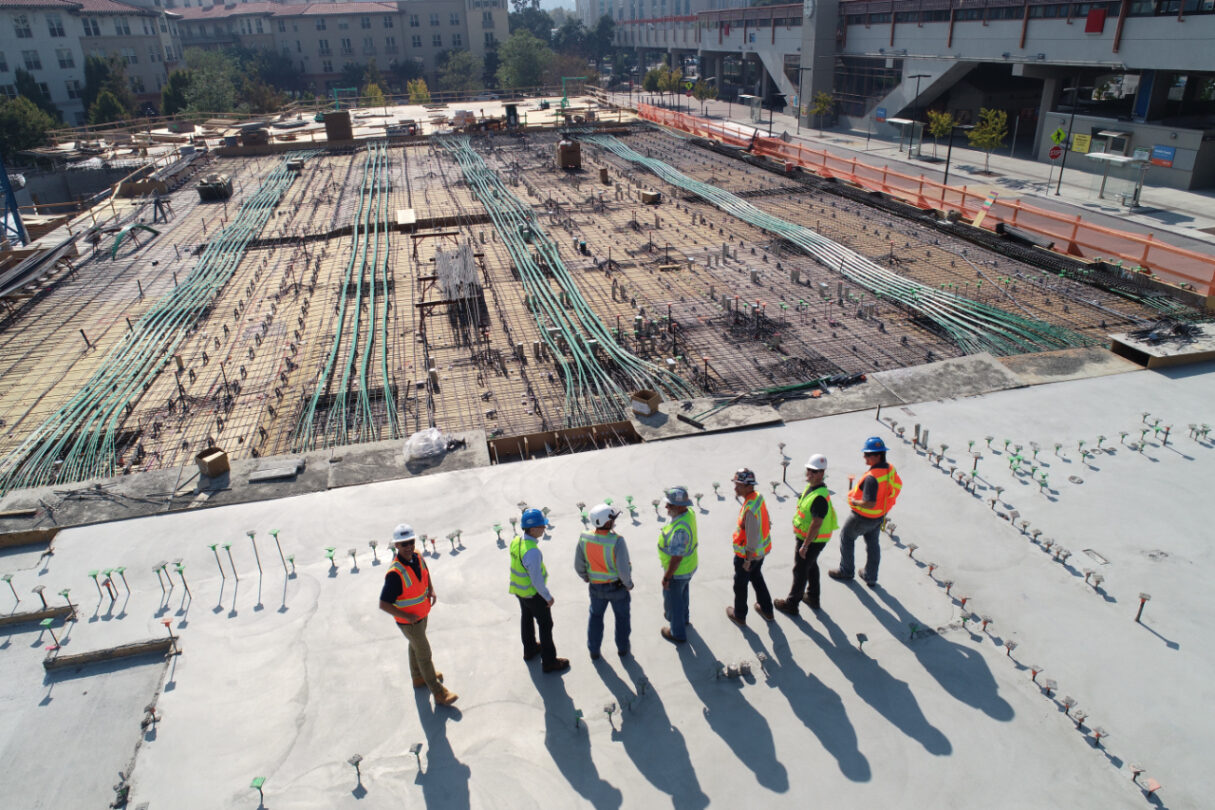Money Matters
Construction Industry Scheme: 6 key things for contractors to understand
The Construction Industry Scheme is a tax deduction scheme for contractors. Learn about compliance, definitions and the impact of the VAT reverse charge.

As a contractor in the construction industry, understanding tax systems may not always be your top priority, especially given other challenges such as the coronavirus (COVID-19) pandemic.
But if you use subcontractors, you need to get to grips with the Construction Industry Scheme (CIS), as you are required to use it and comply with its rules.
The CIS helps HMRC make sure construction businesses pay the right tax by requiring contractors to deduct tax at source from their subcontractors’ pay with a scheme that is similar to the pay as you earn (PAYE) system.
To help you get clarity on the CIS, in this article we cover six topics for you to understand:
1. What is the Construction Industry Scheme?
2. The difference between contractors and subcontractors
5. What is the VAT reverse charge for construction?
6. How to register for the Construction Industry Scheme
1. What is the Construction Industry Scheme?
The Construction Industry Scheme sets out the rules for how you, as a construction contractor, must handle payments to subcontractors and certain other businesses.
Contractors are responsible for registering with the scheme, deducting tax from your payments to subcontractors, and passing it to HMRC.
All payments you make to subcontractors must account for the subcontractor’s tax status.
This may require you to make a deduction from your payments to them, excluding the cost of materials. Your deductions count as advance payments towards the subcontractor’s tax and National Insurance.
Work covered by the CIS includes most construction jobs on a permanent or temporary building or structure, and civil engineering work such as roads and bridges.
You don’t need to register for the scheme if you only do certain exceptional jobs, such as surveying, architecture or delivering materials.
The CIS does not apply to employees.
New CIS rules are coming into force in April 2021. Read this CIS blog to find out more.
2. The difference between contractors and subcontractors
Under the scheme, the terms subcontractor and contractor have special meanings that are wider than those generally used in the construction industry.
What is a contractor?
For CIS purposes, a contractor is a business or other concern that pays subcontractors for construction work.
You should register for the CIS as a contractor if you fall into this category, or if your business doesn’t do construction work but your average spend on construction is more than £1m a year in any three years.
What is a subcontractor?
A subcontractor is a body or person who has agreed to carry out construction operations for a contractor.
The subcontractor may operate in any way, including doing it themselves or using their employees or subcontractors.
Registration requirements
Many construction businesses fall into both categories, in which case you must register as both, then follow the contractor rules when working as a contractor and follow the subcontractor rules when working as a subcontractor.
3. Making payment deductions
Before deducting from a subcontractor’s pay, contractors should first verify the subcontractor with HMRC, if necessary.
Where they need to make a deduction, contractors must:
- Calculate the deduction
- Deduct the money
- Record details of the materials, payment and deduction
- Make the net payment to the subcontractor
- Complete and give a statement of deduction to the subcontractor
- Pay the deduction to HMRC monthly, or quarterly in some cases.
Subcontractors can apply to receive payments gross if they meet certain qualifying conditions.
Subcontractors must make a return of their profits each year, and their tax liability is calculated using that return. If, for any month or quarter, their CIS deductions are greater than the tax they owe, the company should set off the excess against future payments in the same tax year.
Subcontractors may keep their own records for this purpose, or they may use form CIS: record of amounts set-off.
4. Records you must keep
Occasionally, HMRC will inspect the records of contractors in the same way it inspects an employer’s PAYE records.
For the CIS, you must keep records of the gross amount paid, the cost of materials deducted, the amount of tax deducted and the verification number, if applicable.
To register with and use the CIS, you will need lots of other information too.
For verifying subcontractors, you’ll need your Unique Taxpayer Reference (UTR), accounts office reference and employer reference number.
You’ll need details of the subcontractor such as:
- Name
- Unique Taxpayer Reference
- National Insurance number
- Company name
- Company registration number.
You’ll also need to confirm that you have agreed a contract with the subcontractor.
Once HMRC has verified a subcontractor, it gives the contractor a verification reference number.
If paying the higher rate (see below), contractors must note this number and enter it on their monthly return alongside the entries for each higher rate subcontractor.
You must also show the complete verification reference number on all higher-rate subcontractor’s payment and deduction statements.
It’s good practice to give a payment statement to a subcontractor where the payment has been made gross, but you are not obliged to.
On your subcontractor statement, you may also want to include other information to enable the subcontractor to understand the payment made. For example, you may include the amount of VAT charged by the subcontractor.
On or before making any payment to a subcontractor, you must record the following:
- Gross payment, excluding VAT
- Cost of any materials – excluding any VAT – for subcontractors liable for a deduction
- Amount deducted.
5. What is the VAT reverse charge for construction?
The VAT reverse charge is an HMRC initiative that could have a major impact on many businesses involved in buying and selling certain construction services reported under CIS.
The charge is an anti-fraud measure that stops subcontractors charging VAT to contractors, then disappearing before paying it to HMRC – known as missing trader fraud.
The government initially planned to implement the change in October 2019 but, due to Brexit and the coronavirus pandemic, it came into force in March 2021.
The revision shifts the liability for accounting for output VAT from the supplier (subcontractor) to the customer (main contractor). This stops the supplier from absconding with the VAT and not paying it to HMRC.
The government says the change will save more than £495m of tax revenues from fraud by 2024.
6. How to register for the Construction Industry Scheme
Contractors must register for the CIS. Subcontractors can also register – if they do not, deductions are taken at 30% instead of 20%.
Once registered as a contractor, you can use CIS online to file your monthly returns or verify a subcontractor.
You should register when you are about to hire and pay your first subcontractor, regardless of whether you are likely to pay them gross or under deduction.
Contractors
To register as a contractor, set up as a new employer.
HMRC will then set up a contractor scheme – and a PAYE scheme if you have asked them to – and tell you where to find the information you need.
HMRC will also provide registration details that contractors and subcontractors will need when they deal with payments.
Subcontractors
If you are a subcontractor, you should register when you or your firm are about to start work in the construction industry.
Sole traders
If you are a sole trader and you have a UTR, you can register for CIS online. To use this service, you need a Government Gateway user ID and password. If you do not have a user ID, you can create one when you register.
You can apply for gross payment status at the same time.
If you do not have a UTR, register as a new business for Self Assessment and choose ‘working as a subcontractor’ when prompted. You’ll be registered for Self Assessment and CIS at the same time.
Other business types
If you are another type of business, fill in the online form for limited companies or the form for partnerships.
HMRC will register the partnership separately to your sole trader registration.
You should still register for CIS if you are a subcontractor based abroad but do construction work in the UK.
HMRC will confirm your registration and tell you what information you will need to give your contractors before they pay you.
For more details, see the CIS guide for contractors and subcontractors.
Conclusion on the Construction Industry Scheme
As with the PAYE system, the Construction Industry Scheme can be more complex than it initially seems.
The administrative effort of verification, calculating deduction rates, and sending CIS returns and amendments can be onerous for many contractors, especially small companies and those facing other challenging issues.
But a dynamic accounting software system can speed up and smooth the administrative tasks involved while also reducing the potential for errors.
It can easily manage deductions and payments for contractors and file your return securely to HMRC. Good software can also take away the headache of all the manual calculations.
Editor’s note: This article was first published in September 2020 and has been updated for relevance.
Tackling the Construction Industry Scheme with Sage Accounting
Learn about the Construction Industry Scheme and your legal responsibilities, and find out about the new VAT reverse charge for construction.








We are looking for a system that allows us to raise quotes/invoice etc, but we also have to raise appointments paperwork that we print out and fax over, we are in 2 seperate places,
Is there any sage system that would allow us to use the quote/invoices already on the system, print it out as an appointment, but it still has all details we need, ie the delivery address, name of contact and telephone numbers
Or is there software that we could add on
Thanks
Hi Maxine,
You can raise quotes and invoices in Sage 50cloud Accounts. This software also has a diary that you can synchronise with Microsoft Outlook to enable you to record and manage your appointments.
Our Sales team will be able to discuss this further with you. If you’d like to leave your details here http://ow.ly/dNea30rfF0F they’ll be in touch to discuss your options.
Regards,
Paul
Sage UKI